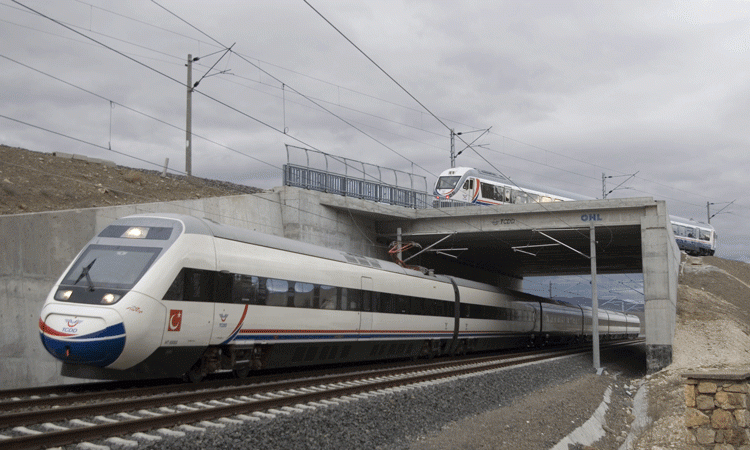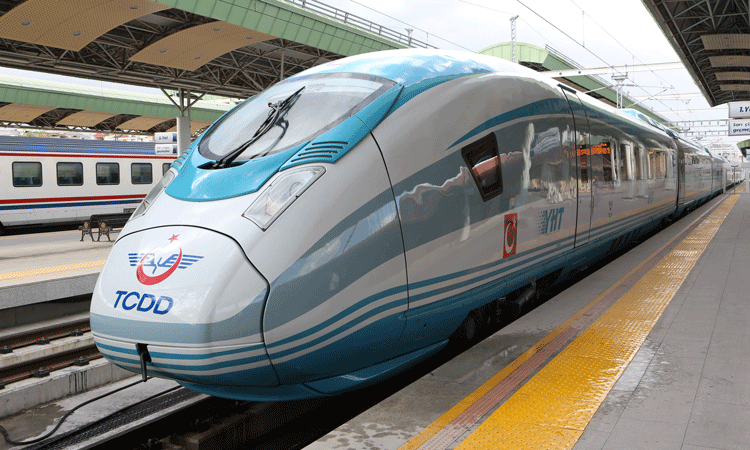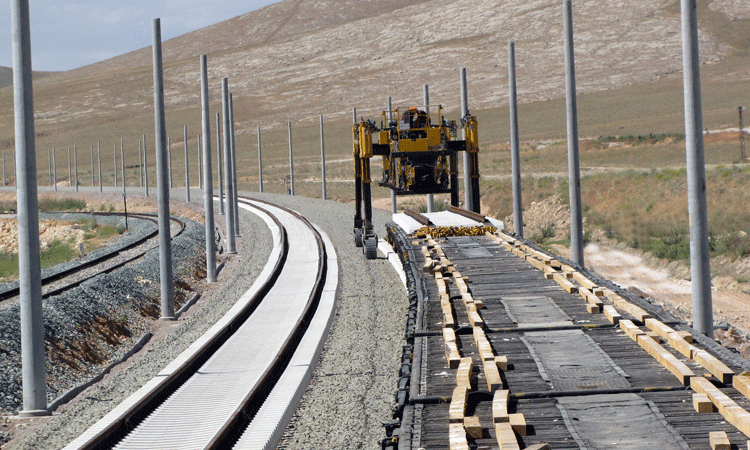High-speed expansion in Turkey shapes the future of travel
Posted: 10 September 2016 | Isa Apaydin (TCDD) | No comments yet
İsa Apaydın, Chairman of the Board and Director General of Turkish State Railways (TCDD), writes that investment is being made in a network of new high-speed and rapid railway lines that will strengthen rail’s position as a safe, reliable and environmentally-friendly mode of transportation.


Railways are at the forefront of the transportation industry, as a cheap, long-lasting and environmentally-friendly mode that is not dependent on oil and the countries with advanced railway technology are gaining momentum in the fields of economy, social affairs and culture. Consequently, European Union countries and certain Far Eastern countries such as China, South Korea and Japan have been heavily investing in the railway sector in recent years, creating international railway corridors.
To keep pace with these developments, Turkey has been following transportation policies that prioritise rail in the last 13 years and approximately €16 billion has been allocated to the railway sector in this time. These investments have been channelled into hundreds of projects to build high-speed and rapid railway lines; refurbish and modernise existing tracks; develop and nationalise the railway industry and to liberalise the rail system.
The first high-speed line in Turkey became operational between Ankara and Eskişehir in March 2009. This 250km/h line was followed by the Ankara–Konya line in 2011, the Eskişehir–Konya line in 2013 and the Eskişehir–İstanbul and Konya–İstanbul lines in 2014.


Turkey’s YHT (Yüksek Hızlı Tren) high-speed train
Creating a new way of life
High-speed trains create a new way of life. Cities become suburbs of each other, while the economic, social and cultural life in them becomes more dynamic and transportation and living habits change radically.
Projects are underway to provide safe and comfortable high-speed and rapid rail services over a wide area, from the east to the west and from the north to the south of the country. Construction is currently progressing on the following lines:
- Ankara–İzmir high-speed line
- Ankara–Sivas high-speed line
- Yerköy–Kayseri high-speed line
- Sivas–Erzincan rapid line
- Bursa–Bilecik rapid line
- Halkalı–Kapıkule rapid line
- Konya–Karaman rapid line
- Karaman–Ulukışla–Yenice rapid line
- Adana–Mersin (third and fourth track) rapid line
- Adana–İncirlik–Toprakkale (second track) rapid line
- Aliağa–Çandarlı rapid line
- Tepeköy–Selçuk rapid line.
In recent years Turkey has focused on the construction of rapid lines to accommodate mixed passenger and freight traffic with a maximum speed of 200km/h alongside the high-speed lines suitable for passenger transport only. By the year 2023 the total length of railways is expected to reach 25,000km with the construction of 3,500km high-speed, 8,500km rapid and 1,000km conventional rail lines. This will significantly increase rail’s market share in freight and passenger transportation.
TCDD is well on track to meet the 2023 targets, working at full speed to strengthen rail’s position as a safe, reliable and environmentally-friendly mode of transportation
The Marmaray Project, which enabled uninterrupted rail traffic between Europe and Asia, will bring a radical solution to urban public transportation as well as provide mainline passenger and freight services on the 76km-long route between Gebze and Halkalı. Expected to serve one million passengers daily, Marmaray is an important link for the international rail corridor that will allow seamless travel from London to Beijing. The Ayrılık Çeşmesi–Kazlıçeşme section of the project commenced operations in October 2013. This section includes the 1.4km-long immersed tube under the Bosphorus, which is the deepest submerged tunnel in the world. The Ankara–İstanbul high-speed line will make use of the Marmaray tunnel at its western end and services will extend as far as Halkalı upon completion of the project.
Today Turkey has a railway network of 12,532km, of which 1,213km are high-speed lines, 3,938km are electrified and 5,008km are signalled.
The addition of high-speed services led to considerable changes in the modal-split on the operating routes in favour of railways. The number of passengers who prefer rail travel has grown steadily over the years to justify the introduction of high-speed: since 2009 rail’s market share has increased from 8% to 72% on the Ankara–Eskişehir route. The Ankara–Konya high-speed line has gained the same success. Although this is a new market for Turkish State Railways (TCDD), rail accounts for 66% of all trips between Ankara and Konya, having the highest share among all transport modes available between the two cities. Rail transport’s share is likely to rise in the forthcoming years with the expansion of the network, in line with the government’s 2023 targets.
Objectives for the railway sector
Objectives for the railway sector have been set for the year 2023, which marks the centenary of the foundation of the Turkish Republic. Accordingly, constructing 3,500km of high-speed, 8,500km of fast and 1,000km of conventional lines to have a total railway network of 25,000km; upgrading the existing conventional network; completing the liberalisation of the rail system; efficient and sustainable implementation of the Safety Management System; increasing the inter-modal share of railways to 10% of the national passenger market and to 15% of the national freight market and development of international railway corridors to increase Turkey’s share of the international transport market are the main targets.
The 2023 programme promises to plug important gaps in the network with 13,000km of new line construction. TCDD (Turkish State Railways) is currently engaged in significant work to connect Ankara, which is set to become the hub of the high-speed rail network, to three of the major cities: Bursa, İzmir and Sivas.


By the year 2030 Turkey plans to have Constructed 3,500km of high-speed lines and 8,500km of rapid lines
The new high-speed line running southwest from Ankara to İzmir – the third most populous city of Turkey – will operate at 250km/h cutting the journey time from 14 hours via the existing conventional line to just 3 hours and 30 minutes.
The Bursa–Bilecik fast line is designed for 200km/h operation and will offer a journey time of 45 minutes. This line will connect Bursa – the fourth most densely populated city in Turkey – to the network for the first time.
Work is also underway for the 250km/h Ankara–Sivas high-speed line, which is an important connection on the east-west axis that will shorten the distance between the two cities to 405km and reduce the travelling time from 12 hours to just 2 hours.
Finally, the 245km stretch from Sivas to Erzincan will allow for 200km/h operation and will slash the travel time from 5 hours and 50 minutes to 1 hour and 30 minutes upon completion. The ambitious plans for expansion are reflected in the size of investment in rolling stock as well. Current passenger services are operated using a fleet of 13 high-speed trainsets and an order has been placed for the purchase of six new very high-speed trainsets from Siemens; four of these units are being trialled in Turkey and the remaining two have been manufactured and are currently being tested in Germany for certification. To keep pace with the massive investment in track and infrastructure, TCDD plans to enlarge its fleet with 106 new high-speed trains by 2023. In this context, a tender will soon be launched to purchase the first 10 trains; 80 trains will be supplied through a technology transfer agreement and 16 trains will be manufactured within the scope of the National Train Project.
On track to meet the 2023 targets
TCDD is well on track to meet the 2023 targets, working at full speed to strengthen rail’s position as a safe, reliable and environmentally-friendly mode of transportation. With the government’s ongoing commitment to invest in railways, work will continue to develop and expand the railway network, as well as improve international links to gain a greater share of the international market. We are hopeful that Turkey will then rank among the top countries in this field.










